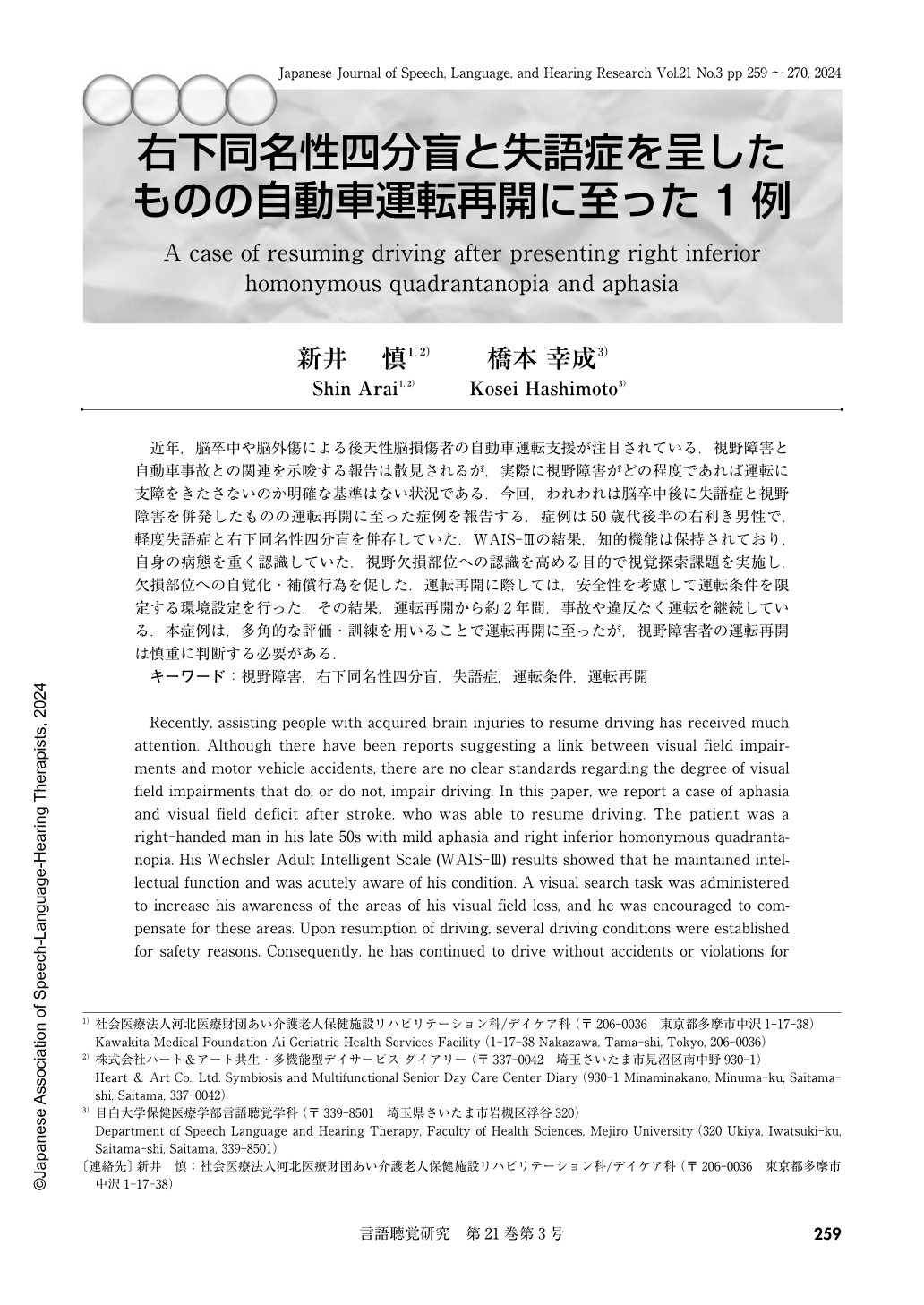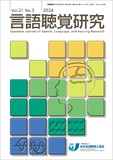Japanese
English
- 有料閲覧
- Abstract 文献概要
- 1ページ目 Look Inside
- 参考文献 Reference
近年,脳卒中や脳外傷による後天性脳損傷者の自動車運転支援が注目されている.視野障害と自動車事故との関連を示唆する報告は散見されるが,実際に視野障害がどの程度であれば運転に支障をきたさないのか明確な基準はない状況である.今回,われわれは脳卒中後に失語症と視野障害を併発したものの運転再開に至った症例を報告する.症例は50歳代後半の右利き男性で,軽度失語症と右下同名性四分盲を併存していた.WAIS-Ⅲの結果,知的機能は保持されており,自身の病態を重く認識していた.視野欠損部位への認識を高める目的で視覚探索課題を実施し,欠損部位への自覚化・補償行為を促した.運転再開に際しては,安全性を考慮して運転条件を限定する環境設定を行った.その結果,運転再開から約2年間,事故や違反なく運転を継続している.本症例は,多角的な評価・訓練を用いることで運転再開に至ったが,視野障害者の運転再開は慎重に判断する必要がある.
Recently, assisting people with acquired brain injuries to resume driving has received much attention. Although there have been reports suggesting a link between visual field impairments and motor vehicle accidents, there are no clear standards regarding the degree of visual field impairments that do, or do not, impair driving. In this paper, we report a case of aphasia and visual field deficit after stroke, who was able to resume driving. The patient was a right-handed man in his late 50s with mild aphasia and right inferior homonymous quadrantanopia. His Wechsler Adult Intelligent Scale (WAIS-Ⅲ) results showed that he maintained intellectual function and was acutely aware of his condition. A visual search task was administered to increase his awareness of the areas of his visual field loss, and he was encouraged to compensate for these areas. Upon resumption of driving, several driving conditions were established for safety reasons. Consequently, he has continued to drive without accidents or violations for approximately two years since his resuming driving. This patient was able to resume driving after our multifaceted assessment and training. Careful testing and preparation are recommended for individuals with visual field impairments if they wish to resume driving.

Copyright © 2024, Japanese Association of Speech-Language-Hearing Therapists. All rights reserved.


